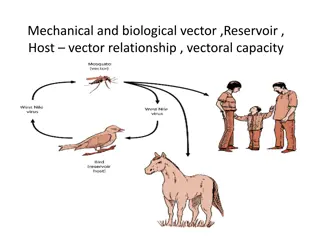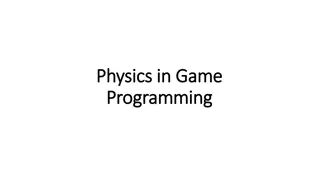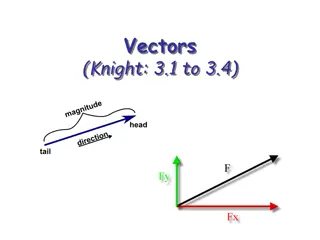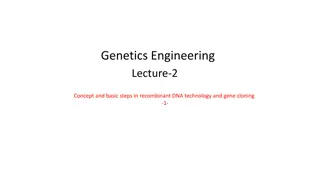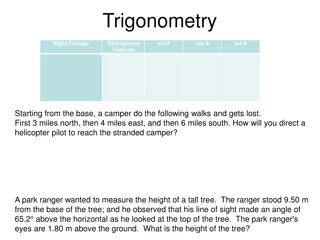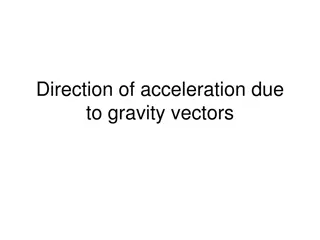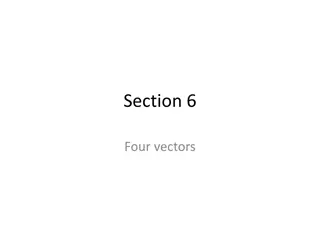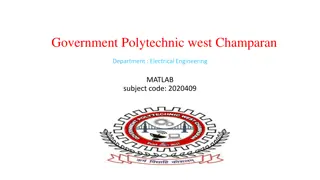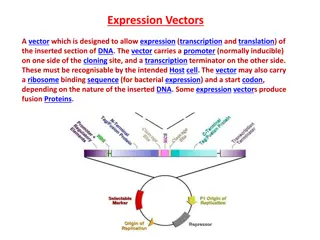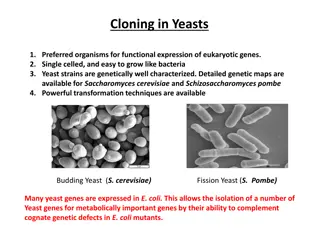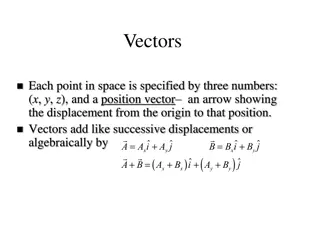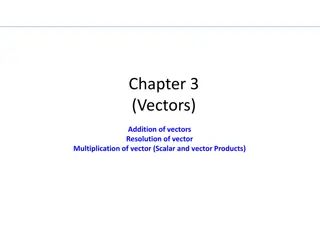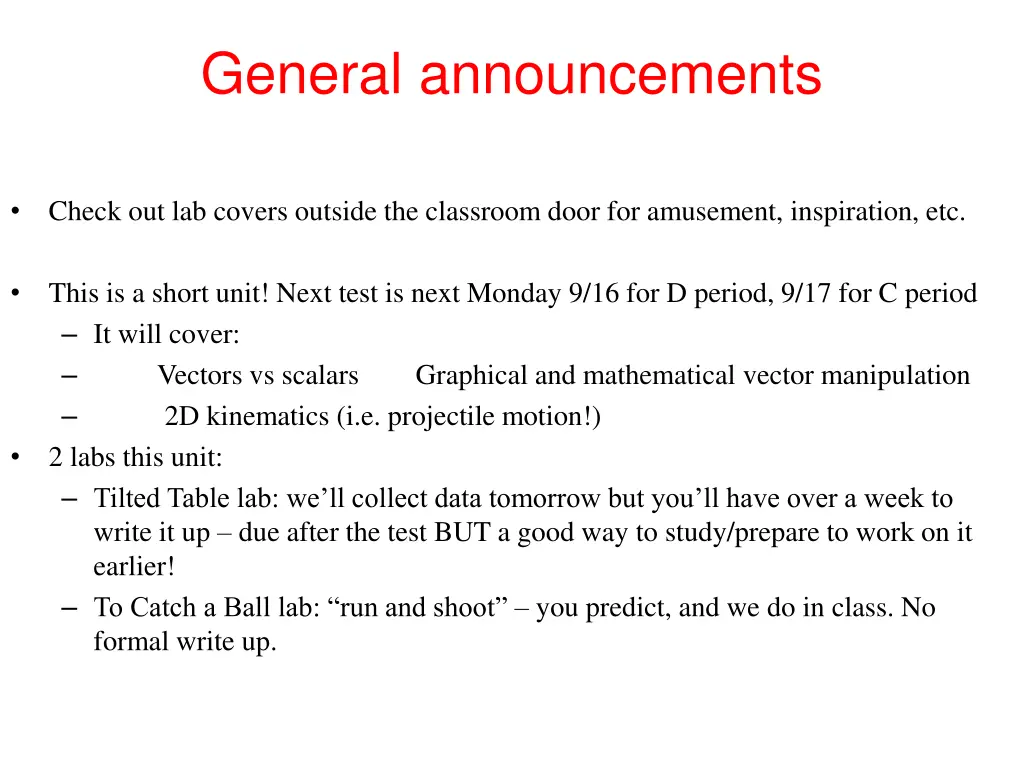
Understanding Vectors and Scalars in Physics
Dive into the world of vectors and scalars in physics, covering topics such as graphical and mathematical vector manipulation, 2D kinematics, and graphical addition of vectors. Explore the differences between scalars and vectors, their graphical manipulation, and more in this informative guide.
Download Presentation

Please find below an Image/Link to download the presentation.
The content on the website is provided AS IS for your information and personal use only. It may not be sold, licensed, or shared on other websites without obtaining consent from the author. If you encounter any issues during the download, it is possible that the publisher has removed the file from their server.
You are allowed to download the files provided on this website for personal or commercial use, subject to the condition that they are used lawfully. All files are the property of their respective owners.
The content on the website is provided AS IS for your information and personal use only. It may not be sold, licensed, or shared on other websites without obtaining consent from the author.
E N D
Presentation Transcript
General announcements Check out lab covers outside the classroom door for amusement, inspiration, etc. This is a short unit! Next test is next Monday 9/16 for D period, 9/17 for C period It will cover: Vectors vs scalars Graphical and mathematical vector manipulation 2D kinematics (i.e. projectile motion!) 2 labs this unit: Tilted Table lab: we ll collect data tomorrow but you ll have over a week to write it up due after the test BUT a good way to study/prepare to work on it earlier! To Catch a Ball lab: run and shoot you predict, and we do in class. No formal write up.
Vectors and scalars SCALARS have only magnitude T= 78oF (not 78 degrees down or up, just 78 degrees just a relative measure of the average amount of kinetic energy per molecule of air) VECTORS have a magnitude AND a direction There are two ways to deal with vectors, graphically and in conjunction with a coordinate axis. We ll start with the graphical approach first.
Graphical addition of vectors This is also known as the tip to tail method A+B+C+D A+B-C+D
Vector odds n ends Subtracting a vector just means reversing its direction 180 without changing its magnitude, as we saw on the previous slide. You can also change the magnitude of a vector by scaling it! and2C then 0.5C
Graphical manipulation individual vectors: q= 20o q= 60o q= 260o q=130o Given information about the magnitude (length) and orientation (angle) of each vector, use a ruler and a protractor to draw vectors to scale.
Graphical manipulation To graphically add vectors, draw each scaled vector tip to tail in order, being careful to keep lengths and orientations accurate. Draw the resultant vector from the starting point (tail) of the first vector to the ending point (tip) of the last vector. Measure with ruler and protractor. (using cm. stick and protractor)
VECTORS Vectors (defined in polar notation) (a force whose magnitude is 8 newtons oriented at an angle of 125 degrees relative to the +x-axis) Vectors (defined in unit vector notation) y A vector with magnitude ONE defined to be in the x-direction is called a UNIT VECTOR in the x- direction. It s symbol is (pronounced i-hat ). The unit vector in the y-direction is . j i x i j A vector framed in Cartesian coordinates in unit vector notation might look like: (this is really the addition of a mini-vector of magnitude 3 m/s in the x-direction and a min- vector of magnitude 4 in the minus y-direction) 4.)
Vector conversions How do we go from polar to unit vector notation? Example 1: Ay=? q= 60o Ax=?
Vector conversions Howdo we go from polar to unit vector notation? Example 1: Ay=? q= 60o Ax=?
Vector conversions How do we go from polar to unit vector notation? Example 2: This is a little bit trickier because you are no longer looking at a first-quadrant triangle. There are two ways to do this. The easiest is to create a triangle that IS a right triangle (see sketch), determine its sides, then add whatever signs and unit vectors are needed to characterize the vector. Remember, what you are doing with unit vector notation is creating mini-vectors, one in the x-direction, one in the y-direction, and adding them. q=130o
Vector conversions Cy=? q=130o f= 50o Cx=?
Vector conversions In looking at the sketch, you can either use the magnitudes, which are always positive, and manually put in the signs for the unit vectors, yielding: Cy=? q=130o f= 50o Cx=? OR write it in terms of components, which carry along the signs with them, yielding: You get the same result either way.
Vector conversions Howdo we go from unit vector to polar notation? Example 1: ? = 2 i + 3.46 j to polar By= 3.46 In looking at the sketch and noting that you can get the magnitude using the Pythagorean relationship and the angle using the tangent function, we can write: q=? Bx= 2
Vector conversions Howdo we go from unit vector to polar notation? Example 1: A = 2 i + 3.46 j to polar By= 3.46 q=? Bx= 2 Note that is ALWAYS positive.
Vector conversions Example 2: Dy= 3.83 q=? f=? Dx= 3.21
Vector conversions Example 2: Dy= 3.83 q=? f=? Dx= 3.21
Force table mini-lab See the apparatus at the front of the room. As a class, we need to figure out how to balance out the contraption!
Why bother with vectors? Image Source: http://www.motivateplay.com




